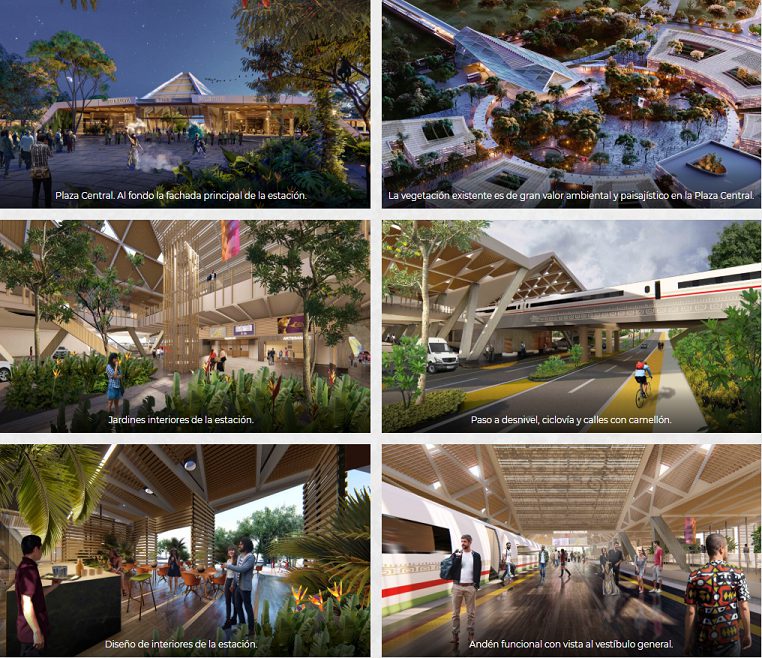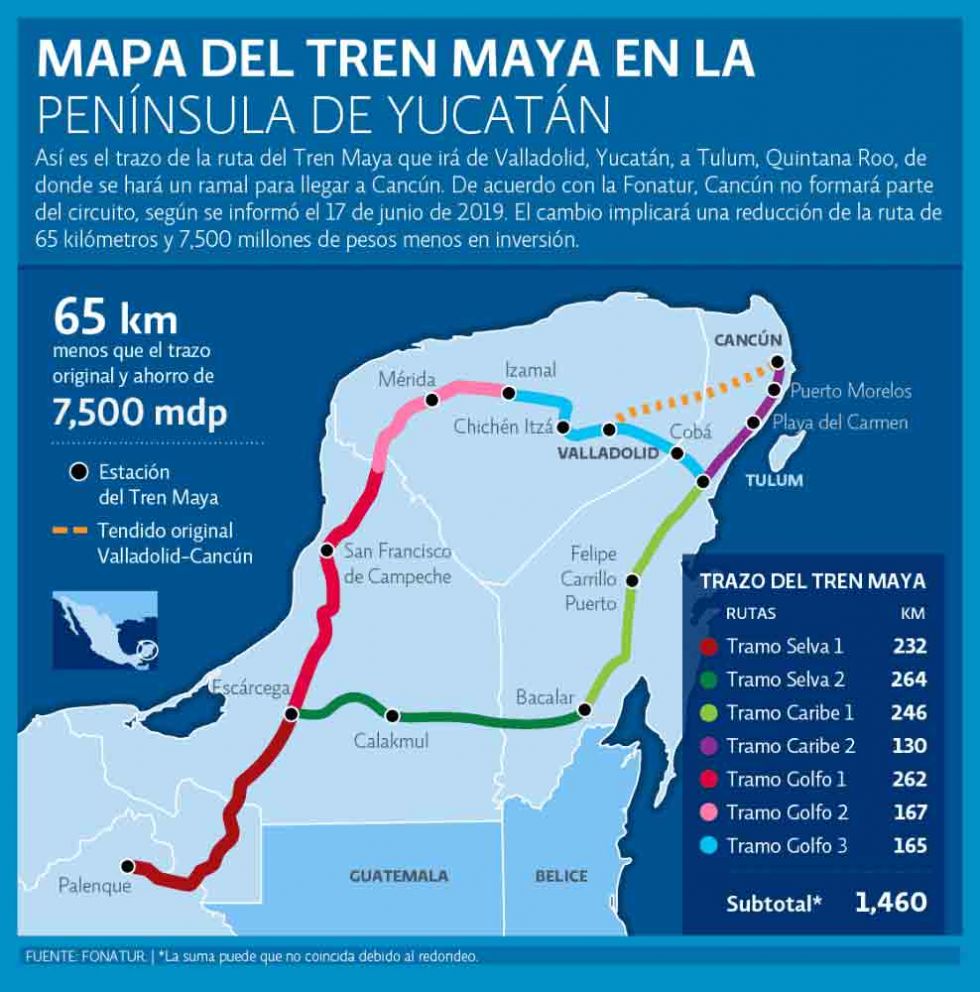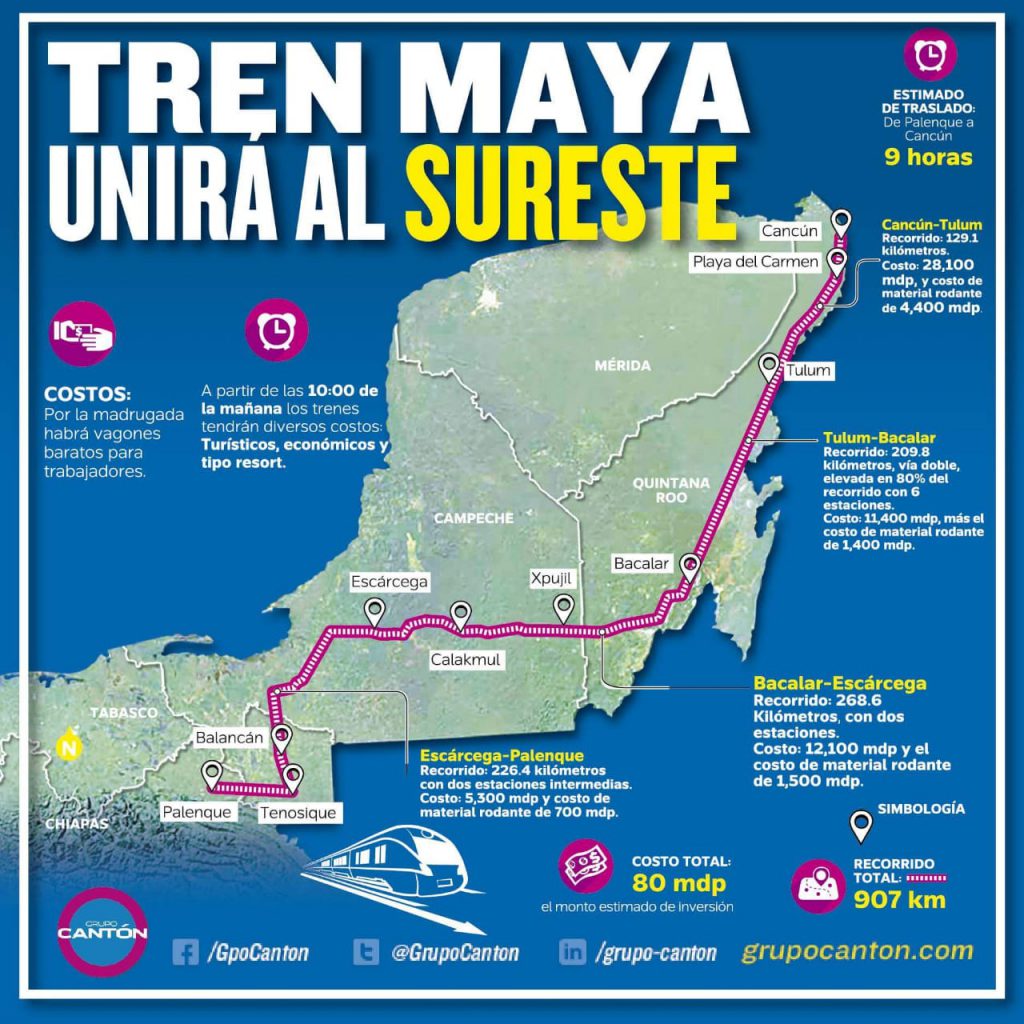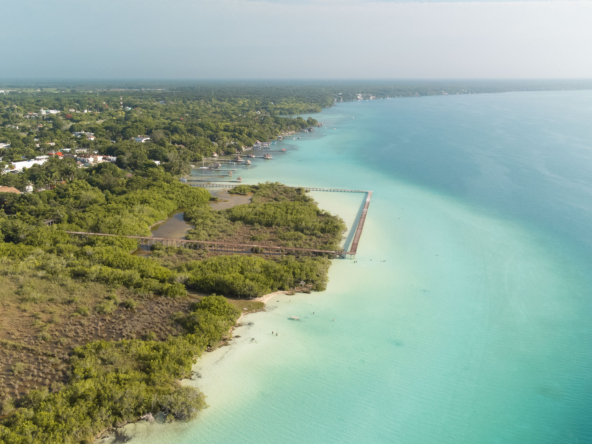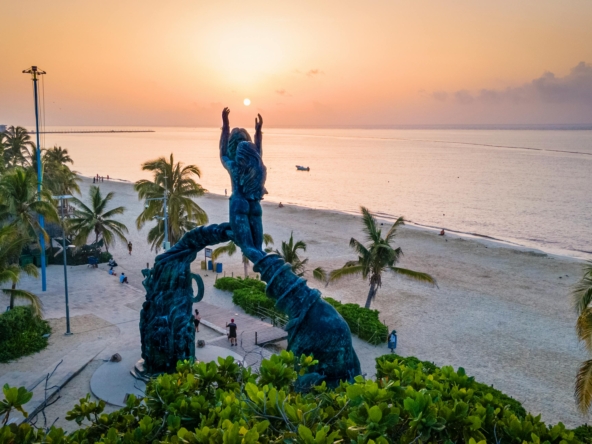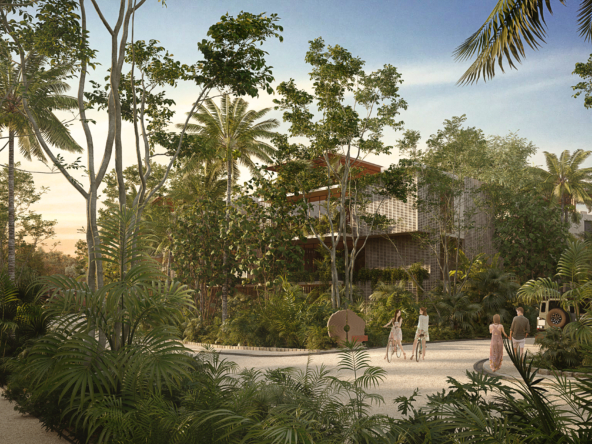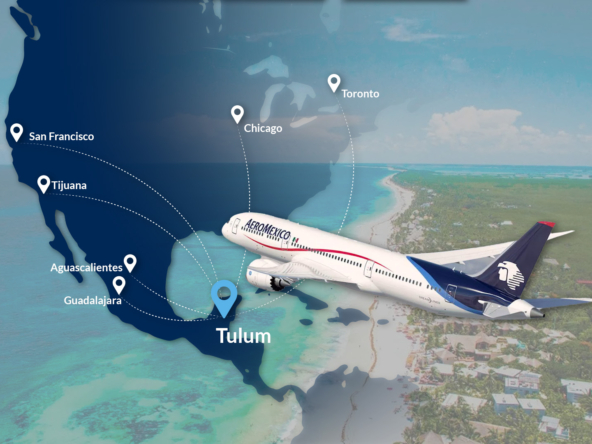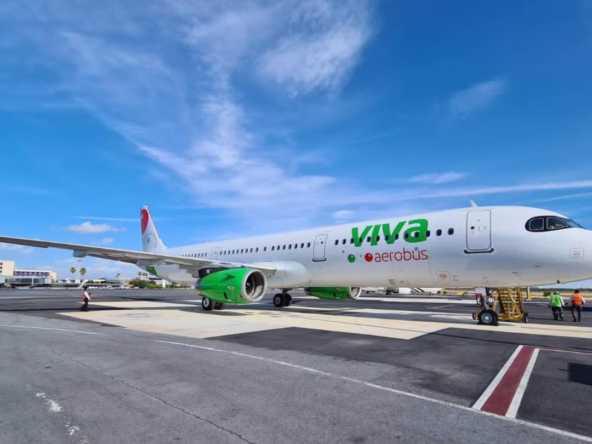The Maya Train project will benefit not only the Riviera Maya but also the other four states it will connect. Its purpose is to improve the quality of life for people, promote tourist destinations, and create thousands of jobs, with an estimated economic impact of up to 35 billion Mexican pesos. All of this will be done in a conscious and environmentally sustainable manner.
The train will cover a distance of approximately 1,500 kilometers and will pass through the states of Chiapas, Tabasco, Campeche, Yucatan, and Quintana Roo.
Preliminarily, the Maya Train has defined 18 stations and 8 stops along the planned route, taking into account factors of interest for both passengers and cargo transportation.
The currently planned stations include:
- Palenque, Chiapas
- Boca del Cerro, Tabasco
- El Triunfo, Tabasco
- Escárcega, Campeche
- San Francisco de Campeche, Campeche
- Xpujil, Campeche
- Mérida, Yucatan
- Izamal, Yucatan
- Chichén Itzá, Yucatan
- Valladolid, Yucatan
- Nuevo Xcán, Quintana Roo
- Cancún, Quintana Roo
- Puerto Morelos, Quintana Roo
- Playa del Carmen, Quintana Roo
- Tulum, Quintana Roo
- Felipe Carrillo Puerto, Quintana Roo
- Bacalar, Quintana Roo
- Chetumal, Quintana Roo
The main benefit of the Maya Train in the Riviera Maya and the other states is the opportunity for a widespread mode of transportation that connects urban and rural areas.
While the fares have not been defined, it is guaranteed that there will be a pricing structure that covers tourists, nationals, foreigners, as well as preferential pricing for the local population, aiming to compete with the existing transportation services in the region.
On the other hand, the issue of environmental impact has certainly created controversy. However, it’s important to note that the Maya Train is working alongside more than 100 specialists and academics in ecological management of infrastructure projects. They have received support from various research centers and Mexican government agencies, such as the Ministry of Environment and Natural Resources (SEMARNAT).
Extensive research, diagnosis, and prediction of various local ecosystems have been conducted to implement the best environmental measures while protecting the region’s flora and fauna. Some notable measures include the creation of wildlife crossings (both elevated and underground) and species reintroduction to their habitat.
The construction of the Maya Train has undergone the supervision and approval of the required environmental studies by federal, state, and municipal authorities, with their authorization and a commitment to follow construction guidelines.
The train will use diesel-electric locomotives, similar to those in well-known locations like the United States, Canada, Europe, and Asia. This factor allows for energy efficiency, reduced environmental impact, and cost savings. Around 40% of the route will be fully electric. Thanks to its ease of operation and maintenance, it’s possible to provide even more efficient and reliable service.
The Riviera Maya, being one of Mexico’s most important tourist destinations, recognizes the economic and social benefits of tourism. However, it’s also aware that responsible management is essential, with a strong emphasis on protecting and conserving the ecosystem.
The Maya Train is becoming a reality, with work already underway on existing railway sections. In a couple of years, we will witness one of Mexico’s most significant projects.
Learn more about our project in Bacalar Aldea Mayab here, which will benefit from the construction of the Maya Train.
